| View previous topic :: View next topic |
| Author |
Message |
connloyalist

Joined: 22 Jul 2020
Posts: 345
Location: the Netherlands
|
 Posted: Sun Sep 27, 2020 6:11 pm Post subject: Please explain: "enlarging lenses" Posted: Sun Sep 27, 2020 6:11 pm Post subject: Please explain: "enlarging lenses" |
 |
|
connloyalist wrote:
Could some please help me understand "enlarging lenses"? It is my (possibly incorrect) understanding that these were originally used when developing negatives. They come up on eBay regularly and I see pictures taken with them in there but can these be used as you would a normal lens? Is there a catch? Assuming the lens will fit an adapter, what would the flange distance be?

Regards, C. |
|
| Back to top |
|
 |
Gerald


Joined: 25 Mar 2014
Posts: 1197
Location: Brazil
|
 Posted: Sun Sep 27, 2020 8:12 pm Post subject: Posted: Sun Sep 27, 2020 8:12 pm Post subject: |
 |
|
Gerald wrote:
I think the correct name is "enlarger lens", which is a lens used in an enlarger to print negatives and slides, usually on a scale larger than 1:1, hence the name "enlarger".
_________________
If raindrops were perfect lenses, the rainbow did not exist. |
|
| Back to top |
|
 |
wolfhansen


Joined: 06 Oct 2013
Posts: 514
Location: Germany, Ruhr Area
|
 Posted: Sun Sep 27, 2020 9:19 pm Post subject: Posted: Sun Sep 27, 2020 9:19 pm Post subject: |
 |
|
wolfhansen wrote:
Yes, you can use the enlarger lenses very good esp. on mirrorless cameras with helicoid systems like the VNEX.
Here an old Ernst Leitz Wetzlar Daxoo 3.5/50mm at my Sony Nex-6 via the VNEX.
#1
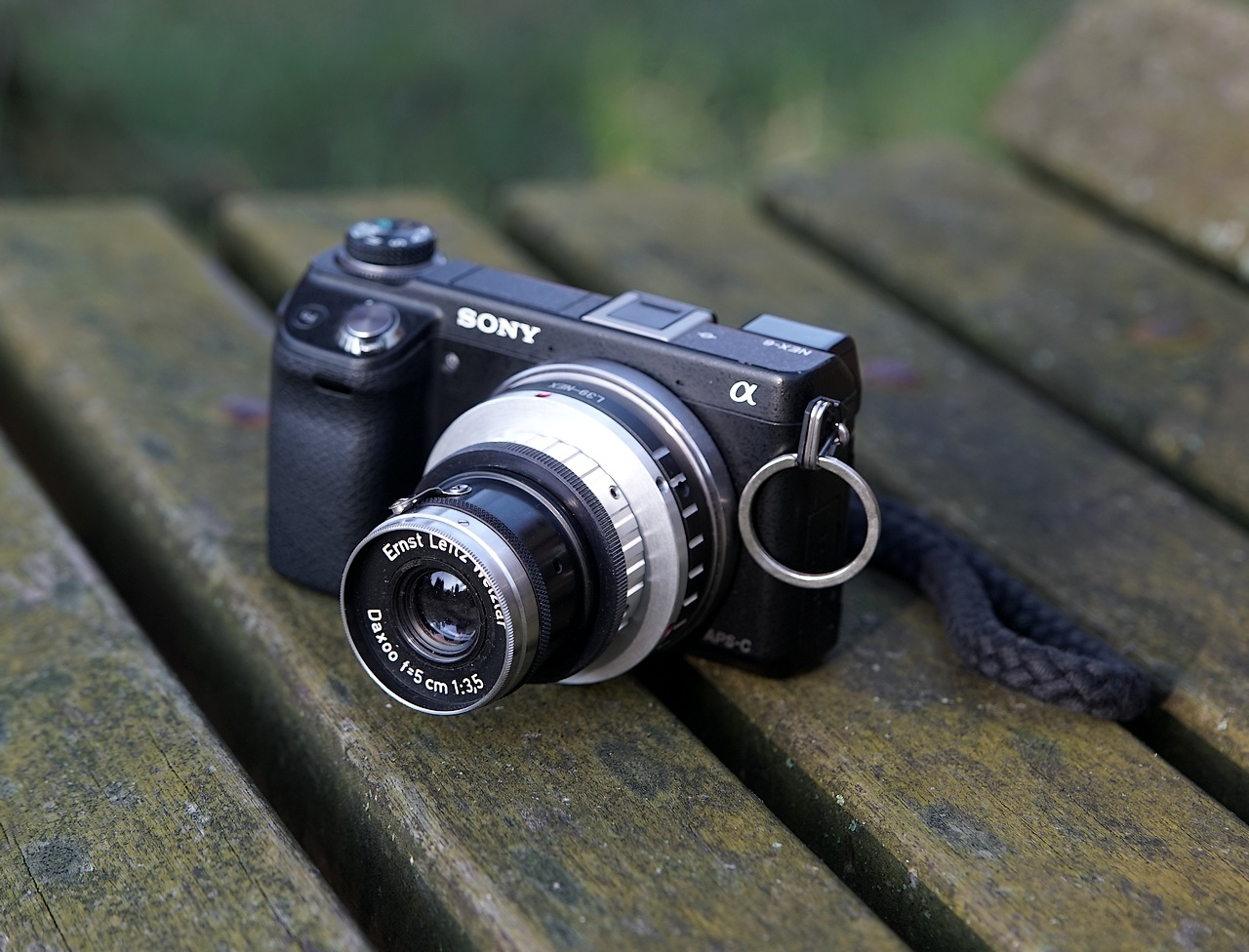
or the Ross Resolux 4.0/90mm
#1
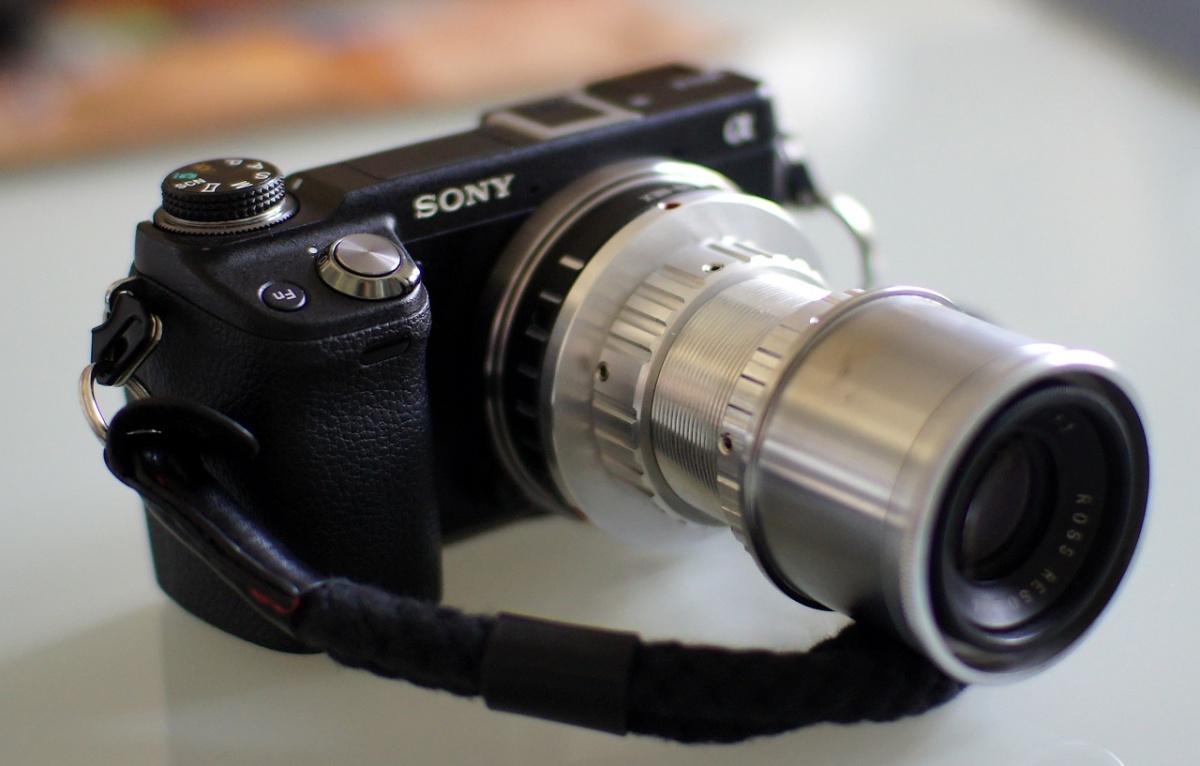
_________________
Greets
Wolfgang |
|
| Back to top |
|
 |
blotafton


Joined: 08 Aug 2013
Posts: 1636
Location: Sweden
|
 Posted: Sun Sep 27, 2020 10:15 pm Post subject: Posted: Sun Sep 27, 2020 10:15 pm Post subject: |
 |
|
blotafton wrote:
Some of them are very good. But there is a catch. They cannot focus on their own and need an adapter for that. They work great for macro. |
|
| Back to top |
|
 |
jamaeolus


Joined: 19 Mar 2014
Posts: 2971
Location: Eugene
Expire: 2015-08-20
|
 Posted: Mon Sep 28, 2020 5:01 am Post subject: Posted: Mon Sep 28, 2020 5:01 am Post subject: |
 |
|
jamaeolus wrote:
Here is a shot I took with my most recent enlarger lens acquisition. For this I used the minolta compact bellows which I repacked the camera side minolta mount with a NEX mount. It's just a cheap Chinese nex m42 close flange I drilled the screw holes to math the minolta. I had a minolta m42 adapter from some cam lot I had purchased then a m39 to m42 ring. The lens is the Schneider Kreuznach APO Componon HM 60mm f4. 
_________________
photos are moments frozen in time |
|
| Back to top |
|
 |
jamaeolus


Joined: 19 Mar 2014
Posts: 2971
Location: Eugene
Expire: 2015-08-20
|
 Posted: Mon Sep 28, 2020 5:16 am Post subject: Posted: Mon Sep 28, 2020 5:16 am Post subject: |
 |
|
jamaeolus wrote:
So depending on your camera and desire it is quite possible to shoot excellent macro using enlarger lenses as taking lenses. If you have a mirrorless camera (highly recommended if you want explore the full range of vintage glass) say a sony nex 5n will set you back 100 dollars. The nex m42 close will be maybe 5 more. Add a 20 dollar helical and 5 dollars for extension tubes then maybe 25 for a good enlarger lens. A beanbag for stability and you can take fantastic macros for under 200 dollars all in. The other thing that something like VNEX (which is a far more elegant and a bit more expensive than what I have described ) is it allows you to easily use projector lenses. Which seem to be good for portraits.
_________________
photos are moments frozen in time |
|
| Back to top |
|
 |
visualopsins


Joined: 05 Mar 2009
Posts: 11062
Location: California
Expire: 2025-04-11
|
 Posted: Mon Sep 28, 2020 6:07 am Post subject: Posted: Mon Sep 28, 2020 6:07 am Post subject: |
 |
|
visualopsins wrote:
Enlargement lenses are used on an enlarger for enlarging film negatives and positive slides onto paper and film. 
_________________
☮☮☮☮☮☮☮☮☮☮☮☮☮☮☮☮☮☮☮☮☮☮☮☮☮☮☮☮☮☮☮☮ like attracts like! ☮☮☮☮☮☮☮☮☮☮☮☮☮☮☮☮☮☮☮☮☮☮☮☮☮☮☮☮☮☮☮☮
Cameras: Sony ILCE-7RM2, Spotmatics II, F, and ESII, Nikon P4
Lenses:
M42 Asahi Optical Co., Takumar 1:4 f=35mm, 1:2 f=58mm (Sonnar), 1:2.4 f=58mm (Heliar), 1:2.2 f=55mm (Gaussian), 1:2.8 f=105mm (Model I), 1:2.8/105 (Model II), 1:5.6/200, Tele-Takumar 1:5.6/200, 1:6.3/300, Macro-Takumar 1:4/50, Auto-Takumar 1:2.3 f=35, 1:1.8 f=55mm, 1:2.2 f=55mm, Super-TAKUMAR 1:3.5/28 (fat), 1:2/35 (Fat), 1:1.4/50 (8-element), Super-Multi-Coated Fisheye-TAKUMAR 1:4/17, Super-Multi-Coated TAKUMAR 1:4.5/20, 1:3.5/24, 1:3.5/28, 1:2/35, 1:3.5/35, 1:1.8/85, 1:1.9/85 1:2.8/105, 1:3.5/135, 1:2.5/135 (II), 1:4/150, 1:4/200, 1:4/300, 1:4.5/500, Super-Multi-Coated Macro-TAKUMAR 1:4/50, 1:4/100, Super-Multi-Coated Bellows-TAKUMAR 1:4/100, SMC TAKUMAR 1:1.4/50, 1:1.8/55
M42 Carl Zeiss Jena Flektogon 2.4/35
Contax Carl Zeiss Vario-Sonnar T* 28-70mm F3.5-4.5
Pentax K-mount SMC PENTAX-A ZOOM 1:3.5 35~105mm, SMC PENTAX ZOOM 1:4 45~125mm
Nikon Micro-NIKKOR-P-C Auto 1:3.5 f=55mm, NIKKOR-P Auto 105mm f/2.5 Pre-AI (Sonnar), Micro-NIKKOR 105mm 1:4 AI, NIKKOR AI-S 35-135mm f/3,5-4,5
Tamron SP 17mm f/3.5 (51B), Tamron SP 17mm f/3.5 (151B), SP 500mm f/8 (55BB), SP 70-210mm f/3.5 (19AH)
Vivitar 100mm 1:2.8 MC 1:1 Macro Telephoto (Kiron)
|
|
| Back to top |
|
 |
Lightshow


Joined: 04 Nov 2011
Posts: 3666
Location: Calgary
|
 Posted: Mon Sep 28, 2020 6:31 am Post subject: Posted: Mon Sep 28, 2020 6:31 am Post subject: |
 |
|
Lightshow wrote:
Enlarger lenses can be very good, they don't have a helicoid for focusing, they don't have a standard flang distance as one wasn't required, their flange focal distance are usually the same as their focal distance, so a 75mm lens must sit further away from the sensor than a 50mm lens to reach infinity.
I have a VNEX too, it's a nice little unit perfect for adapting odd little lenses, it's a little pricy but it is made by a member of the forum.
I also have an M39 bellows I modded for FE mount that works great and has much more extension than a VNEX but doesn't get as short/close to the sensor as the VNEX can, I'm limited to about 60mm enlarger lenses that can reach infinity, I think the VNEX can handle 50mm lenses at infinity.
Here's my bellows stuff https://www.flickr.com/photos/lightshow-photography/tags/bellows/
And my bellows modification thread http://forum.mflenses.com/help-with-bellows-modification-t78913.html
_________________
A Manual Focus Junky...
One photographers junk lens is an artists favorite tool.
My lens list
http://www.flickr.com/photos/lightshow-photography/ |
|
| Back to top |
|
 |
e6filmuser

Joined: 12 Nov 2010
Posts: 860
Location: Reading UK
|
 Posted: Mon Sep 28, 2020 11:26 am Post subject: Posted: Mon Sep 28, 2020 11:26 am Post subject: |
 |
|
e6filmuser wrote:
Beware, some are fixed aperture. Make sure you get one with an adjustable diaphragm, unless you want one only for focus staking.
I would include microfiche lenses in this category.
_________________
Dedicated to using manual focus lenses with digital. Equiped for photography from macro to panoramic & from ultra-wide to extreme telephoto. Mostly shooting outdoor macro. Experienced entomological taxonomist. Some knowledge of mushrooms. |
|
| Back to top |
|
 |
Gerald


Joined: 25 Mar 2014
Posts: 1197
Location: Brazil
|
 Posted: Mon Sep 28, 2020 2:21 pm Post subject: Re: Please explain: "enlarging lenses" Posted: Mon Sep 28, 2020 2:21 pm Post subject: Re: Please explain: "enlarging lenses" |
 |
|
Gerald wrote:
| connloyalist wrote: |
| Is there a catch? |
One of the "catches" is that most enlarger lenses are relatively slow. An enlarger lens with a F2.8 aperture is already considered faster than average. It is common that professional enlarger lenses with focal length of 75mm or more to have a maximum aperture of F5.6.
If a large aperture is not a priority, on the other hand an enlarger lens must be especially well corrected for lateral CA and distortion. Indeed, while a photographic lens is considered excellent when the distortion is about 0.5%, a good enlarger lens can have distortion as low as 0.03% or less.
At the end of the Fujinon professional lens catalog you will find data for the entry-level Fujinon ES enlarger lenses, which were based on a 4-element Tessar, and the Fujinon EP Professional enlarger lenses, with a 6-element Plasmat optical structure.
https://www.pacificrimcamera.com/rl/00886/00886.pdf
Professional enlarger lenses that use a 5 or 6-element Double-Gauss structure are not uncommon. On the lowest end of spectrum, you'll find the usually very cheap 3-element triplet enlarger lenses.
_________________
If raindrops were perfect lenses, the rainbow did not exist. |
|
| Back to top |
|
 |
kds315*


Joined: 12 Mar 2008
Posts: 16664
Location: Weinheim, Germany
Expire: 2021-03-09
|
 Posted: Mon Sep 28, 2020 2:41 pm Post subject: Posted: Mon Sep 28, 2020 2:41 pm Post subject: |
 |
|
kds315* wrote:
| e6filmuser wrote: |
I would include microfiche lenses in this category. |
I would respectfully disagree, not in view of "common sense"; they do basically the same, but are a very specialized niche
and with usually much higher magnifications...
_________________
Klaus - Admin
"S'il vient a point, me souviendra" [Thomas Bohier (1460-1523)]
http://www.macrolenses.de for macro and special lens info
http://www.pbase.com/kds315/uv_photos for UV Images and lens/filter info
https://www.flickr.com/photos/kds315/albums my albums using various lenses
http://photographyoftheinvisibleworld.blogspot.com/ my UV BLOG
http://www.travelmeetsfood.com/blog Food + Travel BLOG
https://galeriafotografia.com Architecture + Drone photography
Currently most FAV lens(es):
X80QF f3.2/80mm
Hypergon f11/26mm
ELCAN UV f5.6/52mm
Zeiss UV-Planar f4/60mm
Zeiss UV-Planar f2/62mm
Lomo Уфар-12 f2.5/41mm
Lomo Зуфар-2 f4.0/350mm
Lomo ZIKAR-1A f1.2/100mm
Nikon UV Nikkor f4.5/105mm
Zeiss UV-Sonnar f4.3/105mm
CERCO UV-VIS-NIR f1.8/45mm
CERCO UV-VIS-NIR f4.1/94mm
CERCO UV-VIS-NIR f2.8/100mm
Steinheil Quarzobjektiv f1.8/50mm
Pentax Quartz Takumar f3.5/85mm
Carl Zeiss Jena UV-Objektiv f4/60mm
NYE OPTICAL Lyman-Alpha II f1.1/90mm
NYE OPTICAL Lyman-Alpha I f2.8/200mm
COASTAL OPTICS f4/60mm UV-VIS-IR Apo
COASTAL OPTICS f4.5/105mm UV-Micro-Apo
Pentax Ultra-Achromatic Takumar f4.5/85mm
Pentax Ultra-Achromatic Takumar f5.6/300mm
Rodenstock UV-Rodagon f5.6/60mm + 105mm + 150mm
|
|
| Back to top |
|
 |
DConvert


Joined: 12 Jun 2010
Posts: 921
Location: Essex UK
|
 Posted: Mon Sep 28, 2020 3:38 pm Post subject: Posted: Mon Sep 28, 2020 3:38 pm Post subject: |
 |
|
DConvert wrote:
| kds315* wrote: |
| e6filmuser wrote: |
I would include microfiche lenses in this category. |
I would respectfully disagree, not in view of "common sense"; they do basically the same, but are a very specialized niche
and with usually much higher magnifications... |
My thoughts too.
Microfiche lenses can be excellent for macro, but they are a different category to enlarger lenses in my mind (as are process lenses). Microfiche lenses are closer to microscope objectives than enlarger lenses - but still have distint differences there too. |
|
| Back to top |
|
 |
jamaeolus


Joined: 19 Mar 2014
Posts: 2971
Location: Eugene
Expire: 2015-08-20
|
 Posted: Mon Sep 28, 2020 4:04 pm Post subject: Posted: Mon Sep 28, 2020 4:04 pm Post subject: |
 |
|
jamaeolus wrote:
The flange distance will vary with the focal length. They are designed to be used with a bellows apparatus so they typically consist of a barrel lens with diaphragm between the elements and a mounting which is often (but not always) an m39 screw. An enlarger lens is very much like a macro bellows lens and of course many can be used with a bellows. Another inexpensive approach. A used m42 bellows will be maybe 25 dollars. M42 to m39 rigs are a couple dollars. See PhotoCornucopia for a giant list of enlarger lenses.
_________________
photos are moments frozen in time |
|
| Back to top |
|
 |
danfromm

Joined: 04 Sep 2011
Posts: 595
|
 Posted: Mon Sep 28, 2020 9:22 pm Post subject: Posted: Mon Sep 28, 2020 9:22 pm Post subject: |
 |
|
danfromm wrote:
For a discussion of enlarging lenses -- lenses used for project an enlarged image of a negative onto a sensitized surface, usually printing paper, to make a print -- see http://ctein.com/booksmpl.htm This is really a book on printing, but it reports on tests of a number of enlarging lenses. To summarize, there are few really good ones.
The typical enlarging lens is optimized for 8x - 12x, but some, such as Schneider's Comparons, are optimized for 2x - 6x. Others, for example Rodenstock's Rodagon G series are made for giant enlargements.
The idea of using a lens optimized for enlarging instead of a general purpose lens to make prints seems to have popped up in the mid-1930s when Boyer brought their Saphir B series of lenses to market. Boyer claimed that the Saphir B was the first lens specifically optimized for printing. I'm a fan of Boyer lenses but Saphir Bs are mediocre. I've seen CZJ f/6.3 Tessars from that time marked Vergrosserung (enlarging) and Verkleinerung (reducing) on the other; these were sold as taking lenses suitable for use at all distances.
Microfiche lenses are optimized for much higher magnifications than typical enlarging lenses. 'fiche is small ... Some, not all, work very well reversed as fixed aperture taking lenses at high magnifications. At the magnifications these lenses are intended to be used at diaphragms are unnecessary because stopping down simply reduced overall image quality, i.e., reduces DoF and softens the image of the plane of best focus. |
|
| Back to top |
|
 |
IAZA


Joined: 16 Apr 2010
Posts: 2587
Location: Indonesia
|
 Posted: Tue Sep 29, 2020 2:09 am Post subject: Posted: Tue Sep 29, 2020 2:09 am Post subject: |
 |
|
IAZA wrote:
| Quote: |
| what would the flange distance be? |
the shorter Focal length, need shorter flange disctance
so longer FL give more space of adaptation.
shortest enlarger lens I used is Rodenstock rodagon 28/4 (need to cut the rear part) you can see samples here https://ihyaahsani.blogspot.com/2014/01/rodenstock-rodagon-284.html on Sony NEX, only macro on m4/3 though.
any lens more than 28mm should be easy to use on APS-C mirrorless.
_________________
nex5, Olympus EPM1, yashica half 14, Canon eos 650 want to see samples of mine? please click My lenses
and My gallery
~Suat~ |
|
| Back to top |
|
 |
philslizzy


Joined: 07 Aug 2012
Posts: 4745
Location: Cheshire, England
|
 Posted: Tue Sep 29, 2020 9:23 am Post subject: Posted: Tue Sep 29, 2020 9:23 am Post subject: |
 |
|
philslizzy wrote:
Enlarger lenses are specially designed to project images from a negative (flat field) to a paper (flat field). So making them particularly useful for copying or digitising negatives.
E Rokkor lenses can be had for cheap and are really good quality
I have used some of the Russian lenses and find that there is some considerable distortion. And for the same price as a Rokkor or Schneider Componon, unless there is a good reason to buy a Russian lens I'd avoid them.
Most lenses use M39, but I have copies that use M42, M25 and some imperial threads
_________________
Hero in the 'messin-with-cameras-for-the-hell-of-it department'. Official. |
|
| Back to top |
|
 |
Ray Parkhurst


Joined: 04 Jul 2011
Posts: 504
Location: Santa Clara, CA, USA
|
 Posted: Fri Oct 02, 2020 1:30 am Post subject: Posted: Fri Oct 02, 2020 1:30 am Post subject: |
 |
|
Ray Parkhurst wrote:
Keep in mind that enlargement lenses, when working properly, enlarge the image from the back (mount) side onto a focal plane on the front side. The minimum enlargement ratio is typically 2:1, ie the paper print is twice the size of the negative. For smaller ratios, the performance usually drops off rapidly, especially at the corners. As a taking lens, this means when mounted in normal orientation (mount threads toward camera), the lens is good for up to 0.5:1 magnification. If higher magnification is desired, the lens is typically reversed so the mounting threads point toward the subject. In this "reverse" configuration the lens can have good performance from ~2:1 or higher magnification as a taking lens, but generally not at lower magnifications. Thus these lenses are not generally useful as taking (or enlargement) lenses between 0.5:1 and 2:1, and often especially not around 1:1.
For 1:1 use, "duplication" or "reproduction" lenses are used. A typical example is the ubiquitous Rodenstock 75mm Apo-Rodagon D M1:1 lens, which is optimized for use in the exact range where enlargement lenses generally do poorly, ie from 0.5:1 up to 2:1.
_________________
...See my Numismatic Photography website at: http://www.macrocoins.com
...Primary Studio Cameras: Sony A7Rm4 and Canon HRT2i
...Go-To studio lenses: Nikon 95mm and 105mm Printing-Nikkors; Schneider 85mm Macro-Varon; Nikon 5x, 10x, and 20x Measuring Microscope Objectives; Mitutoyo BD Plan Apo 50x Microscope Objective
...My Go-To Walkaround Lenses: Laowa 60mm Super Macro; Nikon 28-105D (in manual mode for macro); |
|
| Back to top |
|
 |
Lloydy


Joined: 02 Sep 2009
Posts: 7796
Location: Ironbridge. UK.
Expire: 2022-01-01
|
 Posted: Fri Oct 02, 2020 4:46 pm Post subject: Posted: Fri Oct 02, 2020 4:46 pm Post subject: |
 |
|
Lloydy wrote:
Using enlarging lenses is easy with my Helios Macro Bellows Attachment using a nylon ring to attach the enlarger lens to the bellows, I think this ring was not a part of the original bellows but a part made by the guy I bought it off many years ago who was a keen entomologist and used a Pentax ME Super camera, I bought all his kit off him and I remember him telling me he'd made this ring which went into the front mount of the bellows just like the camera lens adapter would and was secured by a thumbscrew that locked down onto the taper of the adapter. The enlarger lens M39 thread just slipped inside this nylon adapter with a 'good fit' - there is no thread in the adapter - then the thumbscrew is tightened further and compresses the nylon ring and holds the lens firmly in place. This might be something that is available, but I've never seen one, and it's a very simple solution which could easily be made by a machinist.
The Helios bellows is very good, typically Russian in its robustness but precision enough to work just fine. 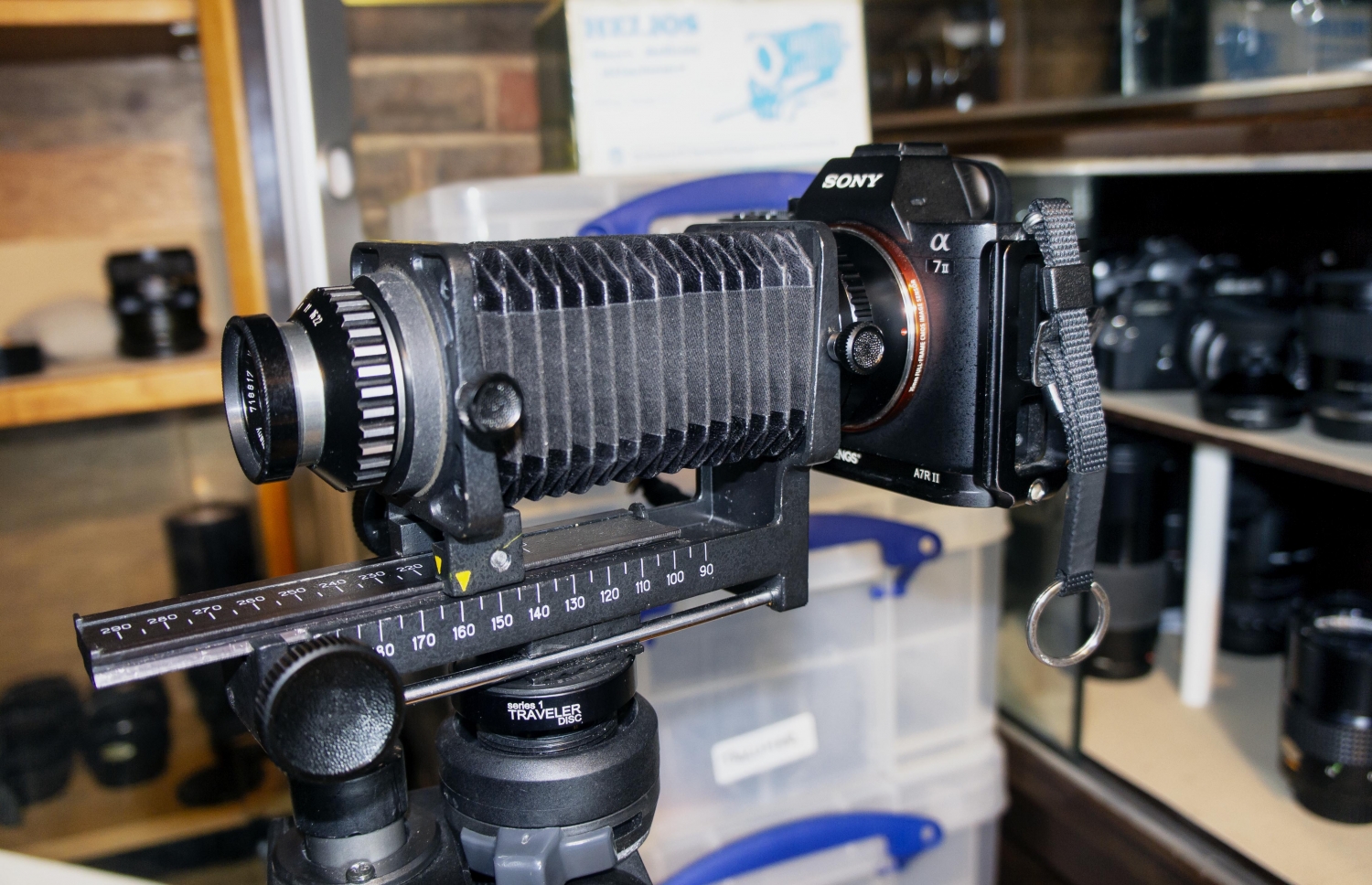
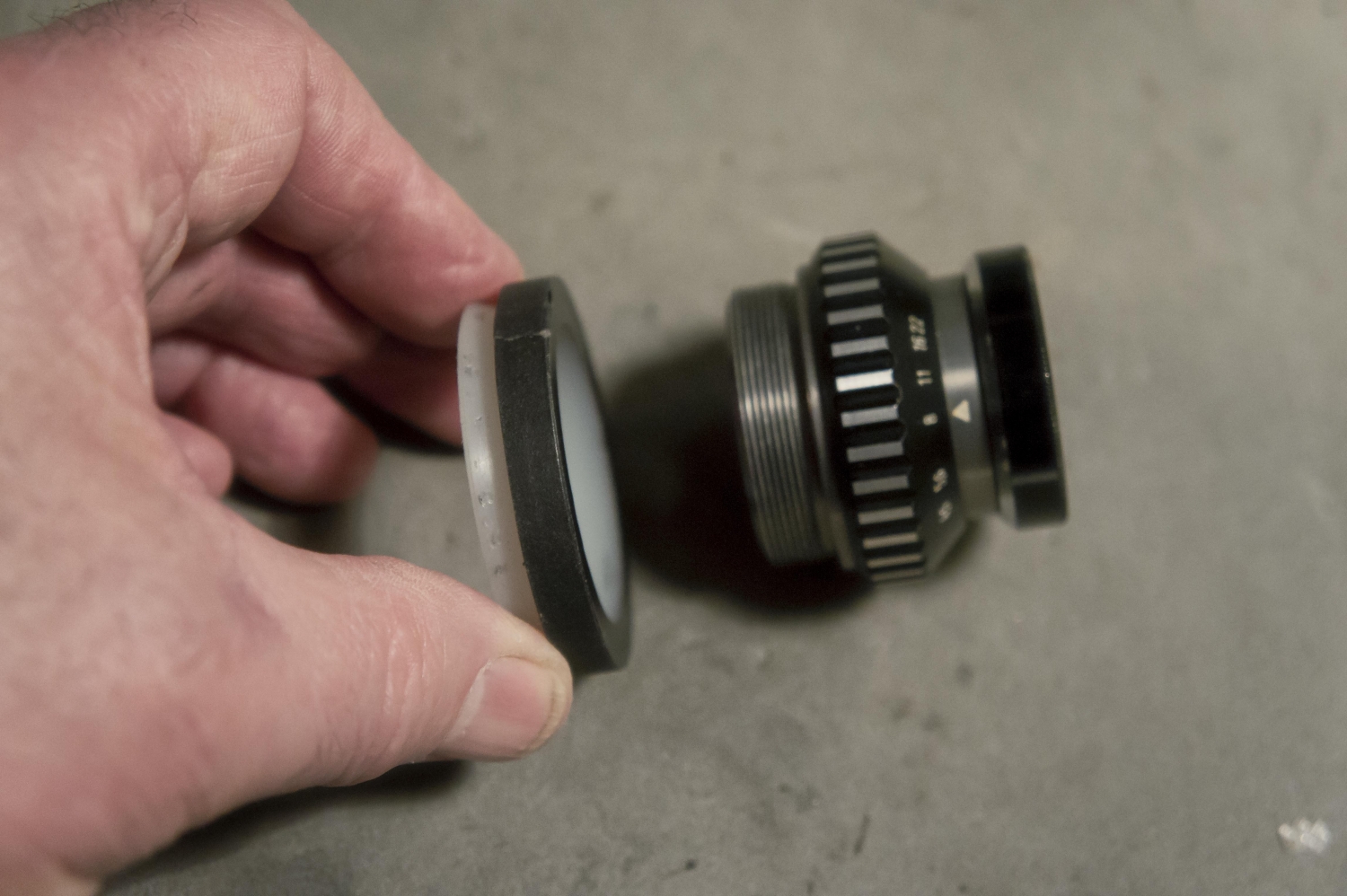
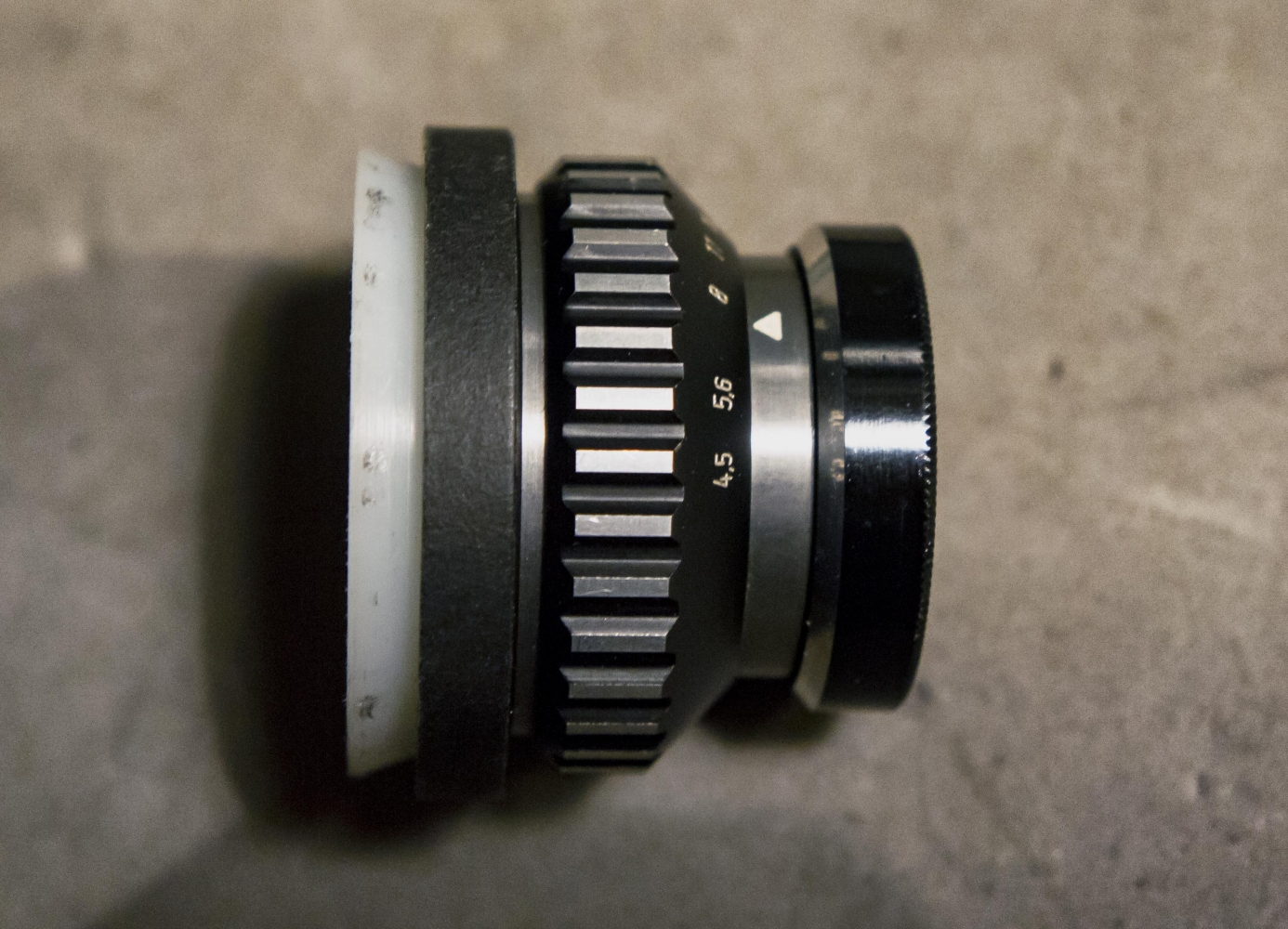
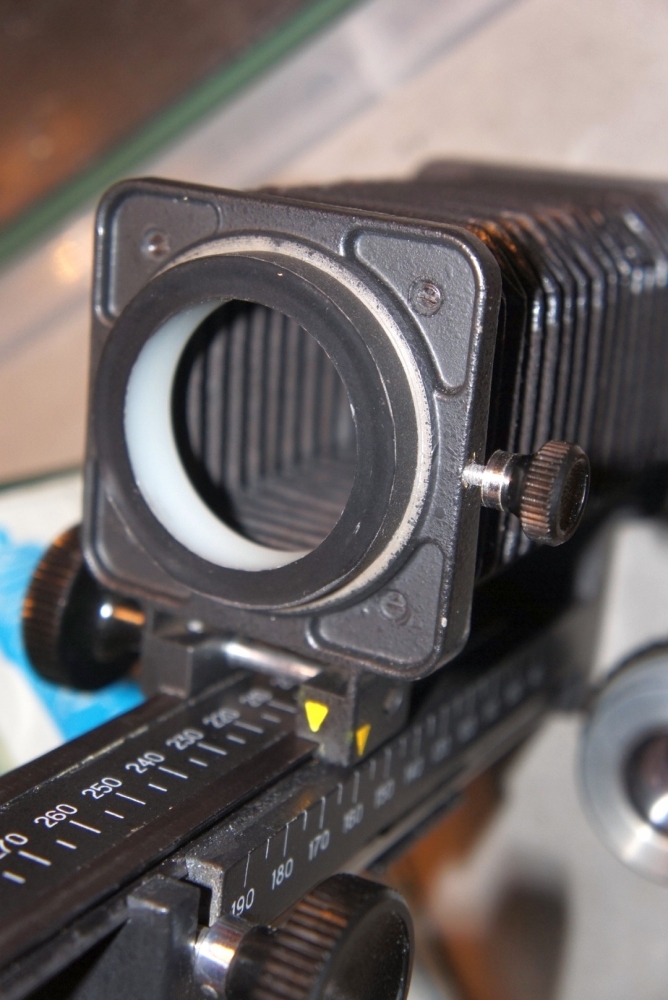
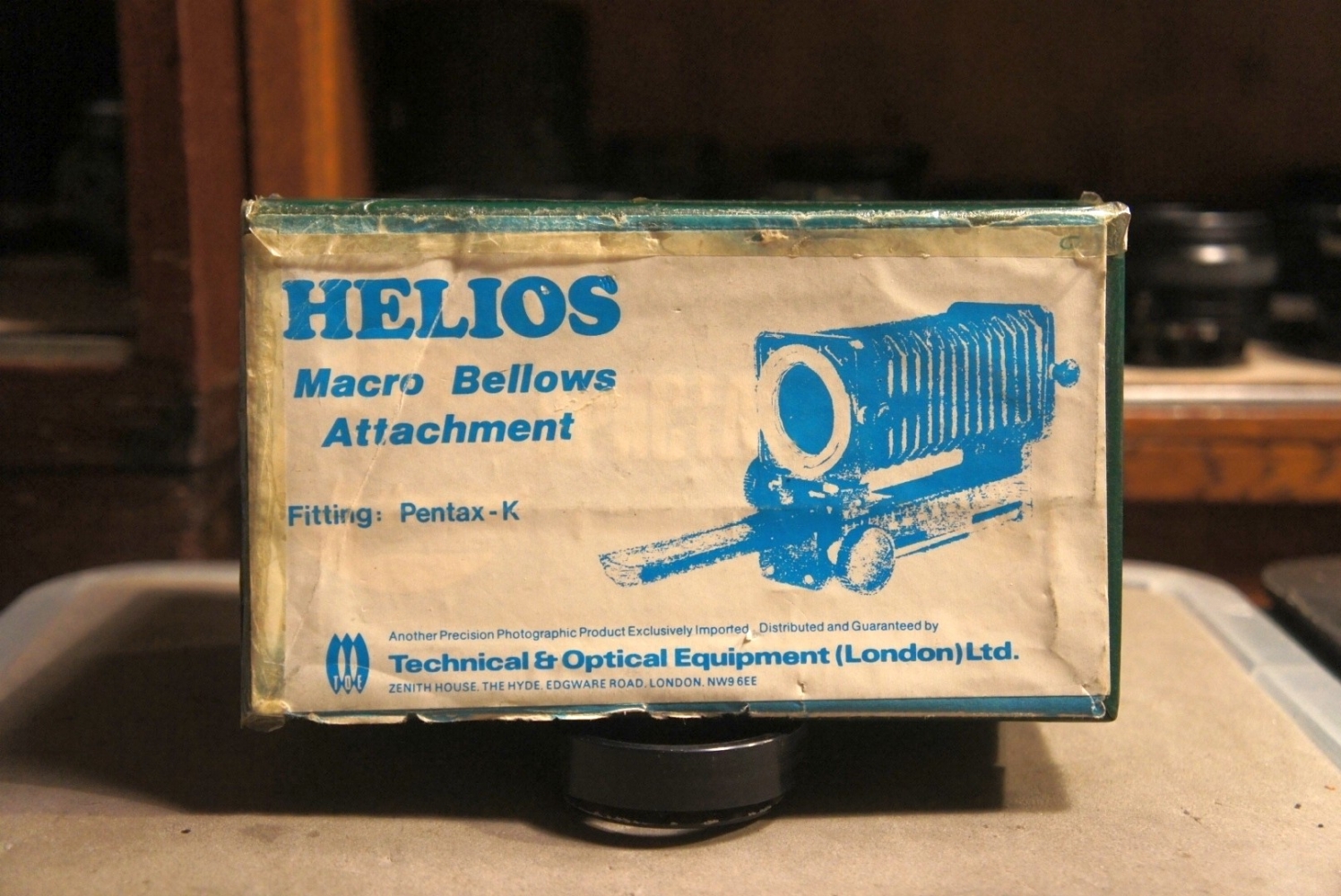
_________________
LENSES & CAMERAS FOR SALE.....
I have loads of stuff that I have to get rid of, if you see me commenting about something I have got and you want one, ask me.
My Flickr https://www.flickr.com/photos/mudplugga/
My ipernity -
http://www.ipernity.com/home/294337 |
|
| Back to top |
|
 |
wolfhansen


Joined: 06 Oct 2013
Posts: 514
Location: Germany, Ruhr Area
|
 Posted: Fri Oct 02, 2020 6:41 pm Post subject: Posted: Fri Oct 02, 2020 6:41 pm Post subject: |
 |
|
wolfhansen wrote:
Nitto S Kominar-E 3.5/75mm (M39 Mount) via VNEX @ Sony A7
#1

#2

#3
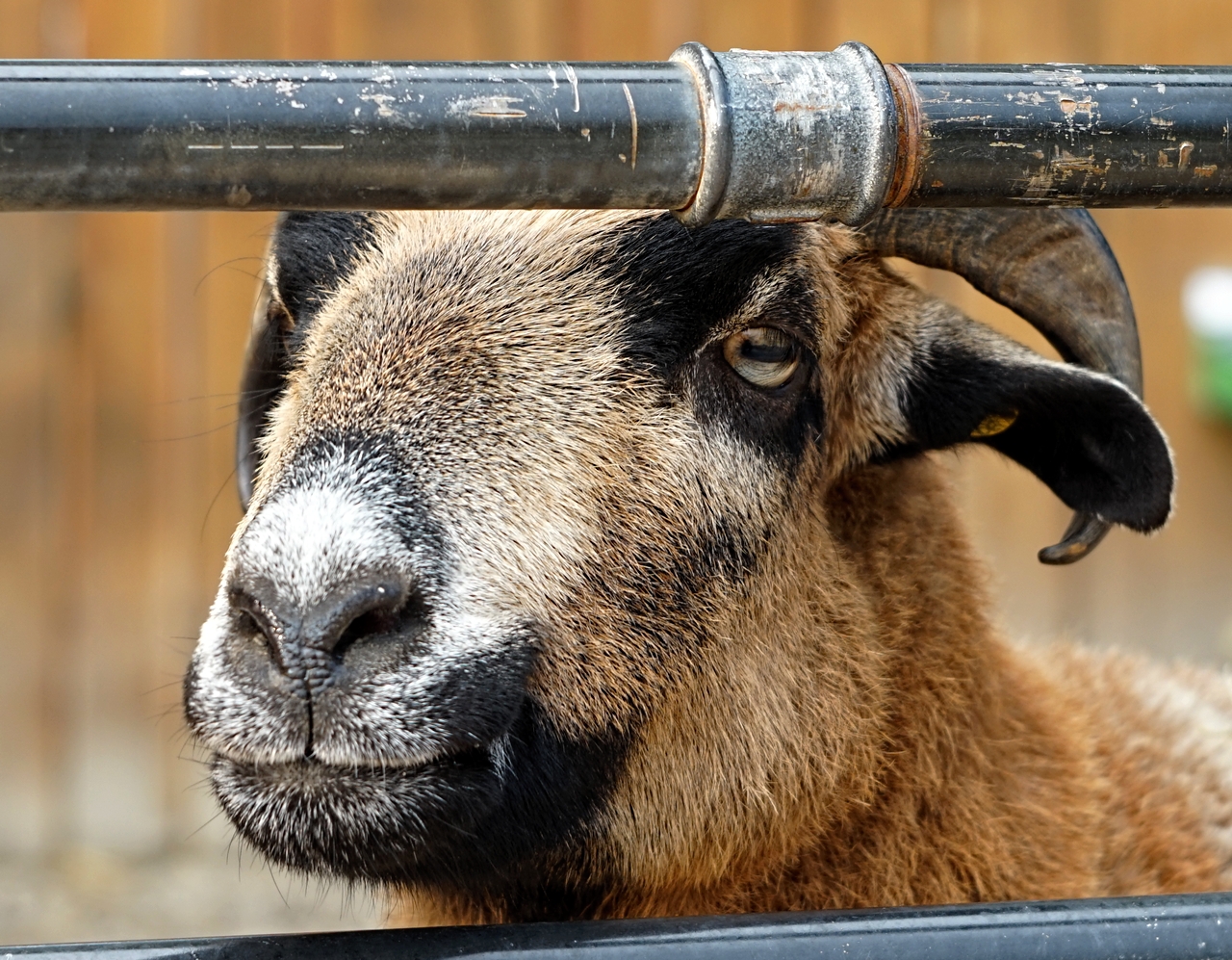
_________________
Greets
Wolfgang |
|
| Back to top |
|
 |
alex ph

Joined: 16 Mar 2013
Posts: 1674
|
 Posted: Sat Oct 03, 2020 10:32 pm Post subject: Posted: Sat Oct 03, 2020 10:32 pm Post subject: |
 |
|
alex ph wrote:
I'd add that some enlarger lenses are also good at mid-far range, after being adapted to an appropriate focusing helicoid.
Here is for instance a respectable Ross Resolux 4/11cm from this thread

And here is a Hexar 3.5/75 from this thread, with a precision that its optical formula is said to be the same as taking Hexars on mid-format folders of the era.
 |
|
| Back to top |
|
 |
jamaeolus


Joined: 19 Mar 2014
Posts: 2971
Location: Eugene
Expire: 2015-08-20
|
 Posted: Sun Oct 04, 2020 1:48 am Post subject: Posted: Sun Oct 04, 2020 1:48 am Post subject: |
 |
|
jamaeolus wrote:

_________________
photos are moments frozen in time |
|
| Back to top |
|
 |
kds315*


Joined: 12 Mar 2008
Posts: 16664
Location: Weinheim, Germany
Expire: 2021-03-09
|
 Posted: Sun Oct 04, 2020 7:57 am Post subject: Posted: Sun Oct 04, 2020 7:57 am Post subject: |
 |
|
kds315* wrote:

_________________
Klaus - Admin
"S'il vient a point, me souviendra" [Thomas Bohier (1460-1523)]
http://www.macrolenses.de for macro and special lens info
http://www.pbase.com/kds315/uv_photos for UV Images and lens/filter info
https://www.flickr.com/photos/kds315/albums my albums using various lenses
http://photographyoftheinvisibleworld.blogspot.com/ my UV BLOG
http://www.travelmeetsfood.com/blog Food + Travel BLOG
https://galeriafotografia.com Architecture + Drone photography
Currently most FAV lens(es):
X80QF f3.2/80mm
Hypergon f11/26mm
ELCAN UV f5.6/52mm
Zeiss UV-Planar f4/60mm
Zeiss UV-Planar f2/62mm
Lomo Уфар-12 f2.5/41mm
Lomo Зуфар-2 f4.0/350mm
Lomo ZIKAR-1A f1.2/100mm
Nikon UV Nikkor f4.5/105mm
Zeiss UV-Sonnar f4.3/105mm
CERCO UV-VIS-NIR f1.8/45mm
CERCO UV-VIS-NIR f4.1/94mm
CERCO UV-VIS-NIR f2.8/100mm
Steinheil Quarzobjektiv f1.8/50mm
Pentax Quartz Takumar f3.5/85mm
Carl Zeiss Jena UV-Objektiv f4/60mm
NYE OPTICAL Lyman-Alpha II f1.1/90mm
NYE OPTICAL Lyman-Alpha I f2.8/200mm
COASTAL OPTICS f4/60mm UV-VIS-IR Apo
COASTAL OPTICS f4.5/105mm UV-Micro-Apo
Pentax Ultra-Achromatic Takumar f4.5/85mm
Pentax Ultra-Achromatic Takumar f5.6/300mm
Rodenstock UV-Rodagon f5.6/60mm + 105mm + 150mm
|
|
| Back to top |
|
 |
e6filmuser

Joined: 12 Nov 2010
Posts: 860
Location: Reading UK
|
 Posted: Sun Oct 04, 2020 9:56 am Post subject: Posted: Sun Oct 04, 2020 9:56 am Post subject: |
 |
|
e6filmuser wrote:
[quote="alex ph"]I'd add that some enlarger lenses are also good at mid-far range, after being adapted to an appropriate focusing helicoid.
The advantage of using them on m4/3 is, if you can make a focusing mechanism, that you can get them close enough to the sensor to focus at distance. Some years ago, I did this with either my Schneider HM40 or the HM90 but cannot find the images. (I uploaded them somewhere).
_________________
Dedicated to using manual focus lenses with digital. Equiped for photography from macro to panoramic & from ultra-wide to extreme telephoto. Mostly shooting outdoor macro. Experienced entomological taxonomist. Some knowledge of mushrooms. |
|
| Back to top |
|
 |
DConvert


Joined: 12 Jun 2010
Posts: 921
Location: Essex UK
|
 Posted: Tue Oct 06, 2020 8:49 am Post subject: Posted: Tue Oct 06, 2020 8:49 am Post subject: |
 |
|
DConvert wrote:
[quote="e6filmuser"]
| alex ph wrote: |
I'd add that some enlarger lenses are also good at mid-far range, after being adapted to an appropriate focusing helicoid.
The advantage of using them on m4/3 is, if you can make a focusing mechanism, that you can get them close enough to the sensor to focus at distance. Some years ago, I did this with either my Schneider HM40 or the HM90 but cannot find the images. (I uploaded them somewhere). |
The same is true for other mirrorless systems (most have flange distances under 25mm).
Indeed (nearly?) all enlarger lenses are 50mm or more in focal length, so they can often reach infinity focus mounted on DSLRs.
50mm lenses on Nikon DSLRs might sometimes be an issue (75mm+ should be fine).
I'd expect all 50mm models to reach infinity on Canon EOS if adapted suitably, I have tried one on PK & could get infinity OK.
Getting a good range of focusing distances with close coupled lenses can be a challenge, so having a single adapter that goes from infinity to macro is harder on DSLRs. |
|
| Back to top |
|
 |
Ray Parkhurst


Joined: 04 Jul 2011
Posts: 504
Location: Santa Clara, CA, USA
|
 Posted: Tue Oct 06, 2020 2:19 pm Post subject: Posted: Tue Oct 06, 2020 2:19 pm Post subject: |
 |
|
Ray Parkhurst wrote:
| DConvert wrote: |
Getting a good range of focusing distances with close coupled lenses can be a challenge, so having a single adapter that goes from infinity to macro is harder on DSLRs. |
I like to use the Nikon 75mm f4 EL-Nikkor in coin photo systems I build as it is one of the only enlargement lenses that does well all the way to 1:1 and beyond without reversing. On Canon DSLRs the Nikon 75mm does very will with the inexpensive 35-90mm helicoids, and is capable of going from ~1:4 up to ~2:1. The numbers don't work out perfectly since the lens does not have "zero length", so you need to include ~11mm in the calculation to account for the length of the lens itself.
Of course 1:4 is not infinity. You can get to infinity with a shorter helicoid, but not to 2:1.
_________________
...See my Numismatic Photography website at: http://www.macrocoins.com
...Primary Studio Cameras: Sony A7Rm4 and Canon HRT2i
...Go-To studio lenses: Nikon 95mm and 105mm Printing-Nikkors; Schneider 85mm Macro-Varon; Nikon 5x, 10x, and 20x Measuring Microscope Objectives; Mitutoyo BD Plan Apo 50x Microscope Objective
...My Go-To Walkaround Lenses: Laowa 60mm Super Macro; Nikon 28-105D (in manual mode for macro); |
|
| Back to top |
|
 |
|
|
